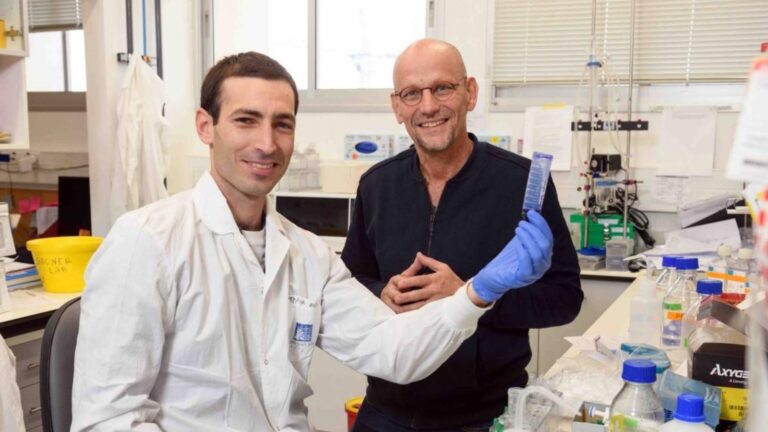Knowing that heart tissue sustains irreparable damage in the wake of a heart attack, Israeli researchers set out to find cardiac “patches” that could be transplanted into the body to replace the damaged area. The Tel Aviv University scientists integrated cardiac cells with nanofibers made of gold particles to form functional engineered tissues.
In his Tissue Engineering and Regenerative Medicine Laboratory, Dr. Tal Dvir and his PhD student Michal Shevach of Tel Aviv University’s Department of Molecular Microbiology and Biotechnology and the Center for Nanoscience and Nanotechnology, together with their colleagues, set out to meet one of the biggest challenges in the development of cardiac patches — ensuring that engineered tissue can mimic the heart’s coordinated electrical system, which controls heartbeat and rhythm.
Aware that 50 percent of heart attack victims die within five years of their initial attack, Dvir and his colleagues turned to gold particles hoping it could serve as a new treatment option. A functioning, transplantable tissue could not only save lives, but improve a patient’s quality of life overall.
Gold has been found to increase the connectivity of biomaterials, says Dr. Dvir. With the addition of the gold particles, cardiac tissues contract much faster and stronger as a whole, he reports, making them more viable for transplants.
The research was recently published in the Journal of Materials Chemistry B.
Fighting for Israel's truth
We cover what makes life in Israel so special — it's people. A non-profit organization, ISRAEL21c's team of journalists are committed to telling stories that humanize Israelis and show their positive impact on our world. You can bring these stories to life by making a donation of $6/month.







